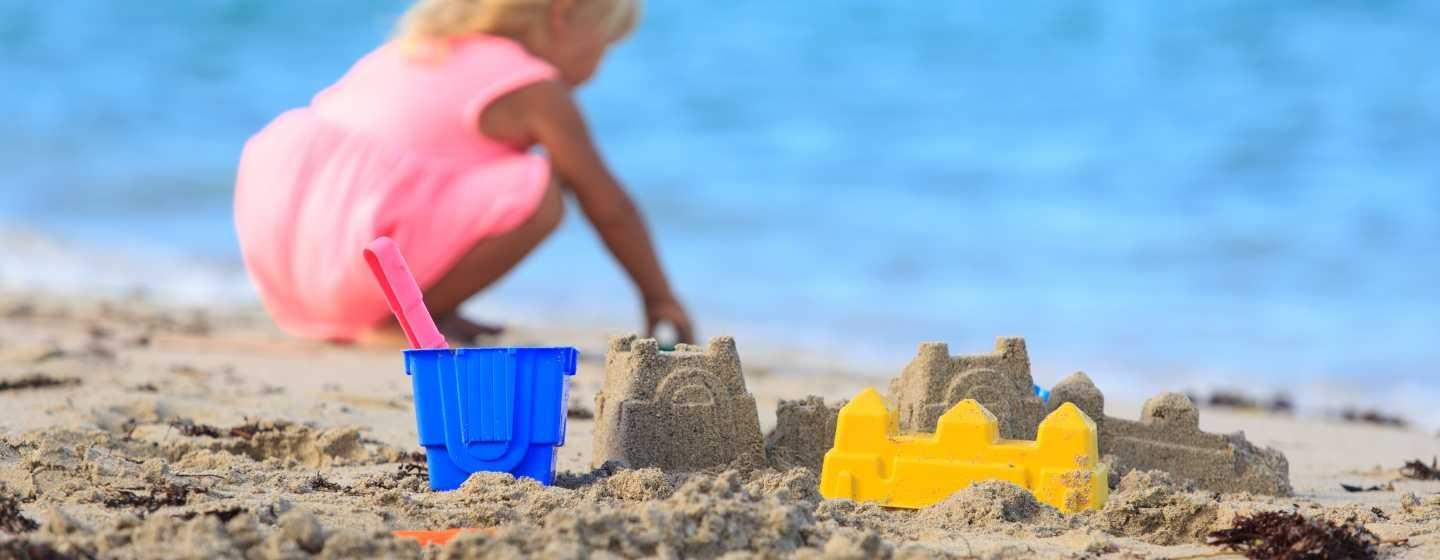The Science of Sandcastles


It’s a common sight when you go to the beach. Kids (and adults) happily toiling away on a major construction project: building the sandcastle to end all sandcastles.
It’s pure sand-grain-and-plastic-bucket-and-shovel–filled fun.
But sandcastle making also involves serious physics because sandcastles are built from tens of millions of grains of sand piled up and packed together. Those granules have sharp edges that rub and tumble together. The strength of the sandcastle depends on the interaction between those sand grains with the water in between acting as the “glue.”
To understand sandcastles, you first need to step away from the beach.
Have you ever noticed how an insect can walk on the surface of a pond? What about that domed effect you see when you fill a glass of water to the VERY TOP? Those are all examples of surface tension in action. Surface tension is also why you can build a sandcastle.
Surface tension is the force that causes water molecules to be attracted to one another. It gives wet sand its strength and makes it perfect for building great sandcastles. The water molecules coat the grains of sand and hold them together, forming water-drop bridges in the gaps between the grains. Too little water and the surface tension can’t hold the sand grains together. Too much water and the water turns into a lubricant, causing the castle to collapse and begin to flow with the water.
“We found that the optimum water content is very low, much lower than what people normally use,” said Dr. Daniel Bonn of the University of Amsterdam. The findings appear in the journal Scientific Reports.
Researchers say the sand-to-water ratio should be about 8:1 (eight parts sand to one part water). Make sure every grain of sand is coated with water to maximize the number and strength of those water-drop bridges that hold the sand together.
Here’s a recipe. Grab a five-gallon bucket and fill about 90% of it with sand. Then fill it to the top with water and mix it all together. The mixing is important.
Flip the bucket over to make the sandcastle, then carefully pack the sand. The packing tightens the little water bridges that hold the grains together.
Dr. Bonn believes his findings could interest engineers, construction managers, miners and anyone working with granular materials because it’s important to understand their mechanical behavior.
Now have fun on the beach. But watch out for the waves hitting the beach—no amount of sandcastle surface tension will hold up to that!